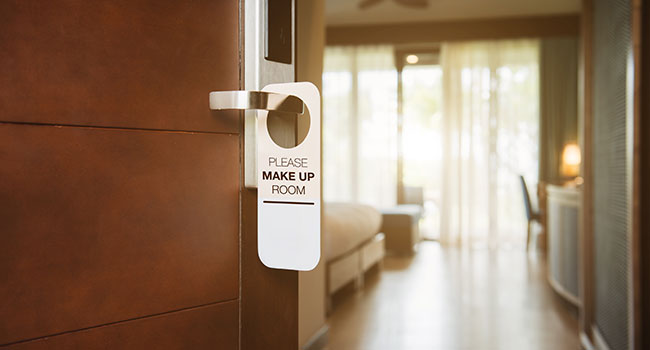
The Key Issue
- By Brian Davidson
- Mar 23, 2023
It is February 2014. A woman is getting ready in her room on a cruise ship when she hears a knock on the door; it is a crewmember delivering breakfast. She is not presentable so she tells him to leave it by the door. He insists on bringing it in and after she repeatedly declines, there is a heated verbal exchange through the door.
The crewmember eventually leaves but does not forget the encounter. He returns a couple hours later with a master key and lets himself in.
After beating, raping, and strangling the woman, the crewmember attempts to throw her overboard. Luckily, the woman escaped and was able to call for help. What ensues garners worldwide media attention and a 30-year prison sentence.
In the aftermath, the cruise company must examine how this incident occurred. They must determine prevention techniques, and what is needed to ensure the tragedy never happens again. After much consideration, they elect to install a comprehensive key management system in several of their cruise ships to track and safeguard their physical keys against unfettered access.
Their decision trickles down to their competitors who, watching the situation from the sidelines, decides to heed the warning and follow suit. The influencer effect is noticeable as cruise ship companies have since doubled-down on security efforts to protect their most valuable asset: their guests.
The incident was a wakeup call, however, an unexplainable number of companies and industries that have not recognized a glaring reality: if you do not maintain a vigilant audit trail of your keys, a devastating incident can occur.
An Important “Theme”
When it comes to security and key management, one of the most daunting verticals to consider is tourism, specifically theme parks. Consider the number of staff, guests, merchandise and equipment it takes to operate a major theme park. A complex ecosystem requires the most comprehensive security measures to maintain guest and employee safety.
One of the most valuable takeaways is working with some of the biggest names in tourism is applied to any vertical, standardization. Multiple entities within a company integrate more efficiently when they fall under a central monitoring source. If sector A is under a different security system than sector B, tracking both becomes cumbersome and time-consuming. When you are operating at the highest level in your industry, efficiency is a premium. By tracking, auditing and managing physical keys or access badges from a single source, you are consolidating efforts and allowing business sectors and divisions to speak a shared language. In addition, it allows for faster implementation of contingencies, backups and maintenance plans.
Ensuring guest and staff safety is a tremendous responsibility and its one we take incredibly seriously. All it would take would be one door to be left open or one key to fall into the wrong hands and the safety of the entire park would immediately come into jeopardy. Fortunately, effective key management solutions go a long way into preventing that.
Game of Chance
Speaking of learning lessons, except for maybe Tom Cruise, George Clooney, and Robert De Niro, there are not many of us who could say we learned truly valuable life lessons on the floor of a casino. In the security world, companies should consider adopting the, “house always wins,” model in terms of effective security measures.
Casinos represent the marquis industry that has adopted key management solutions. They were so far ahead of any other vertical when it came to understanding how one lost key impacts their entire organization. While theme parks and cruise ships consider guests the most critical asset, casinos main security concern is often money, and they take protecting it just as seriously. For example, some casino customers require a four-person authentication to release a key. Some people would think that is excessive, but when one key can shut down an entire operation, you need the most complete system possible to monitor its usage.
One Key to Rule Them All
That is the irony of the issue of key management. It is easy to get lost in the number of cabinets or keys that a company utilizes. Really, it comes down to just one. If one key goes missing, what then?
I remember we had a call with a company and at the end of the presentation, they decided to pass on our solution. Six months later, one of their employees left her master key on her desk. When they were unable to locate the key, they had to spend $50,000 to re-key the entire building.
The cost to replace keys pales in comparison though to the consequence of a person incurring risk or death because a key has gone missing. We presented to a hospital recently who declined our solution in the end. Their reason? “We don’t know anyone that’s ever died because of a key being lost,” a staff member said. Unfortunately, some of our customers have come to us for just that very reason. It is the death or injury of a customer or employee that helped them realize how important key management is to their overall safety and security.
What would it take to realize that managing access needs should be a top priority? For the cruise ship company, they did not realize until it was too late. Instead, follow the lead of the theme parks and casinos and put your chips on proven key management solutions that can not only improve your company’s efficiency, but also more importantly, protect the assets that mean the most to you.
This article originally appeared in the March / April 2023 issue of Security Today.